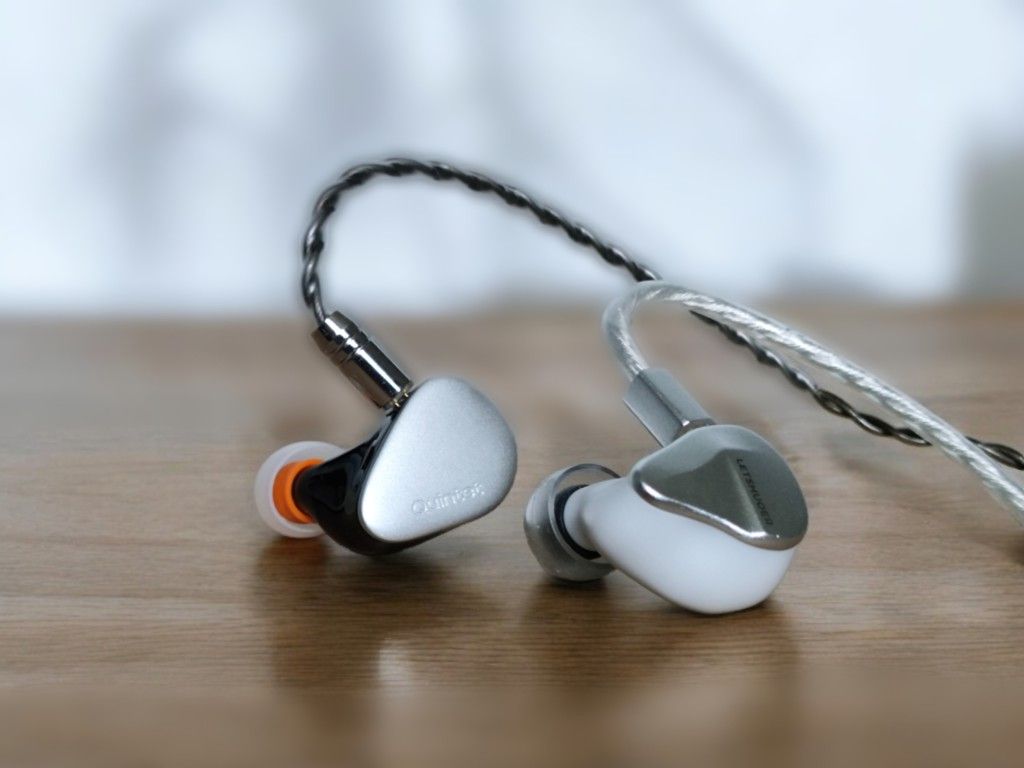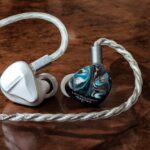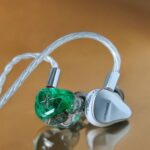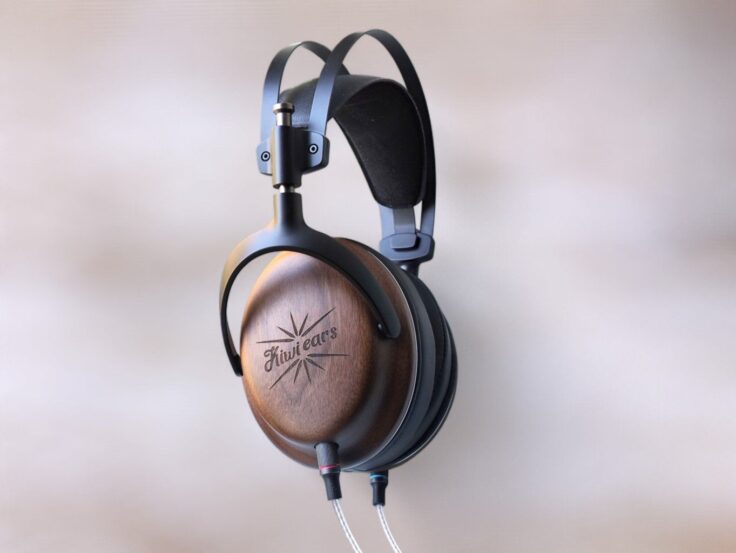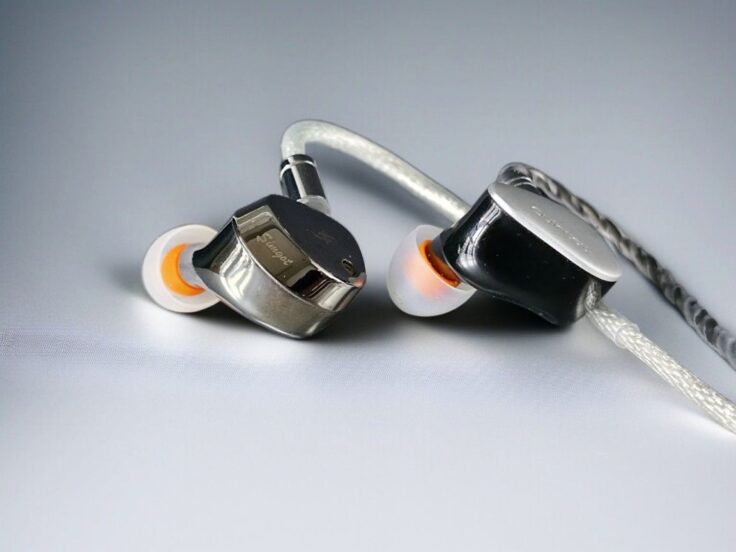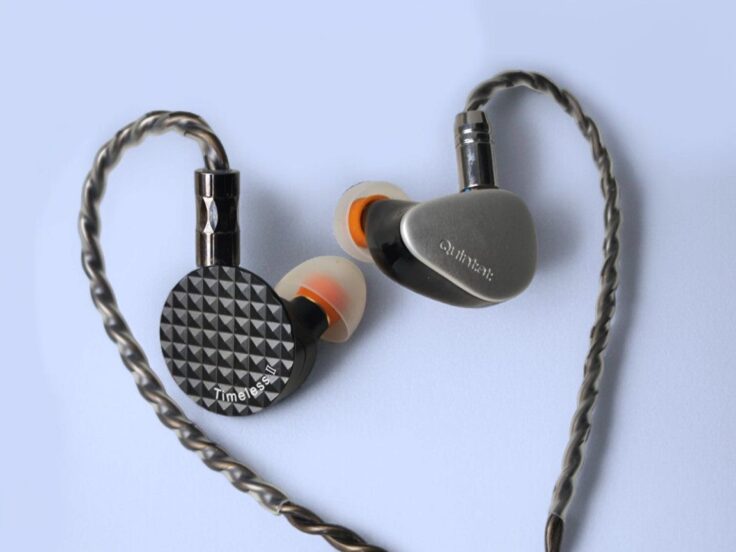The Letshuoer Cadenza 4 is a recently launched hybrid quad-driver in-ear monitor earphone (IEM). It has four drivers, one dynamic driver, and three balanced armatures. You can read my full review of the Cadenza 4 here.
The Kiwi Ears Quintet is also a multi-driver hybrid IEM. However, where the Cadenza 4 sticks to a dynamic driver and three balanced armatures, the Quintet combines the dynamic driver with a planar magnetic driver, two balanced armatures, and even a piezoelectric bone conductor. My review of the Quintet can be found here.
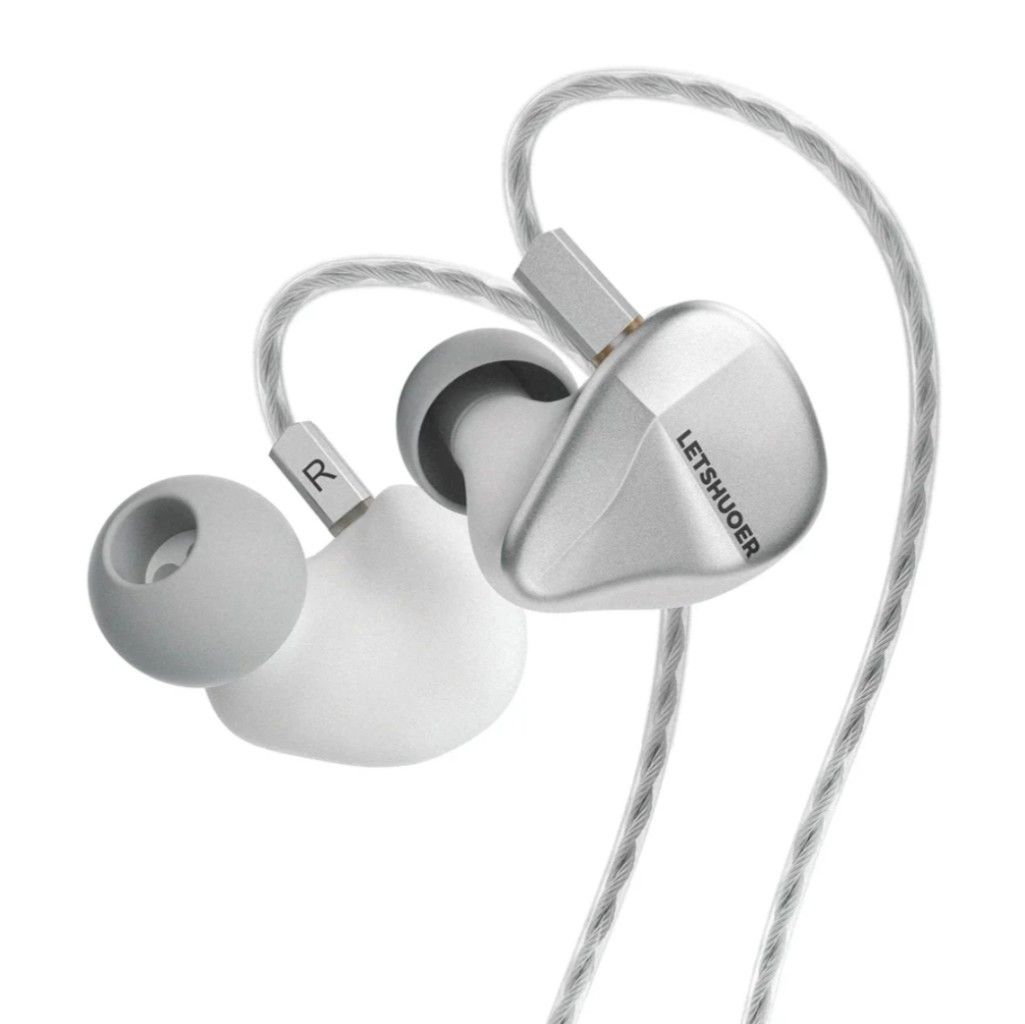
LETSHUOER CADENZA 4 SPECIFICATIONS
- Wired In-Ear Monitor
- Driver: 10mm beryllium-coated DD, 1 Sonion BA, and 2 Knowles BA
- Impedance: 15 ohms
- Sensitivity: 102 dB
- Frequency Response: 20Hz – 40kHz
- Chassis Material: 3D-printed resin, anodized aluminum faceplate
- Cable: 1.2 m, 392-strand silver-plated monocrystalline copper
- Earphone connectors: 0.78 mm dual pin
- Audio Connectors: 90-degree angled 2.5mm, 3.5mm, and 4.4mm interchangeable connectors
Check the current price here:
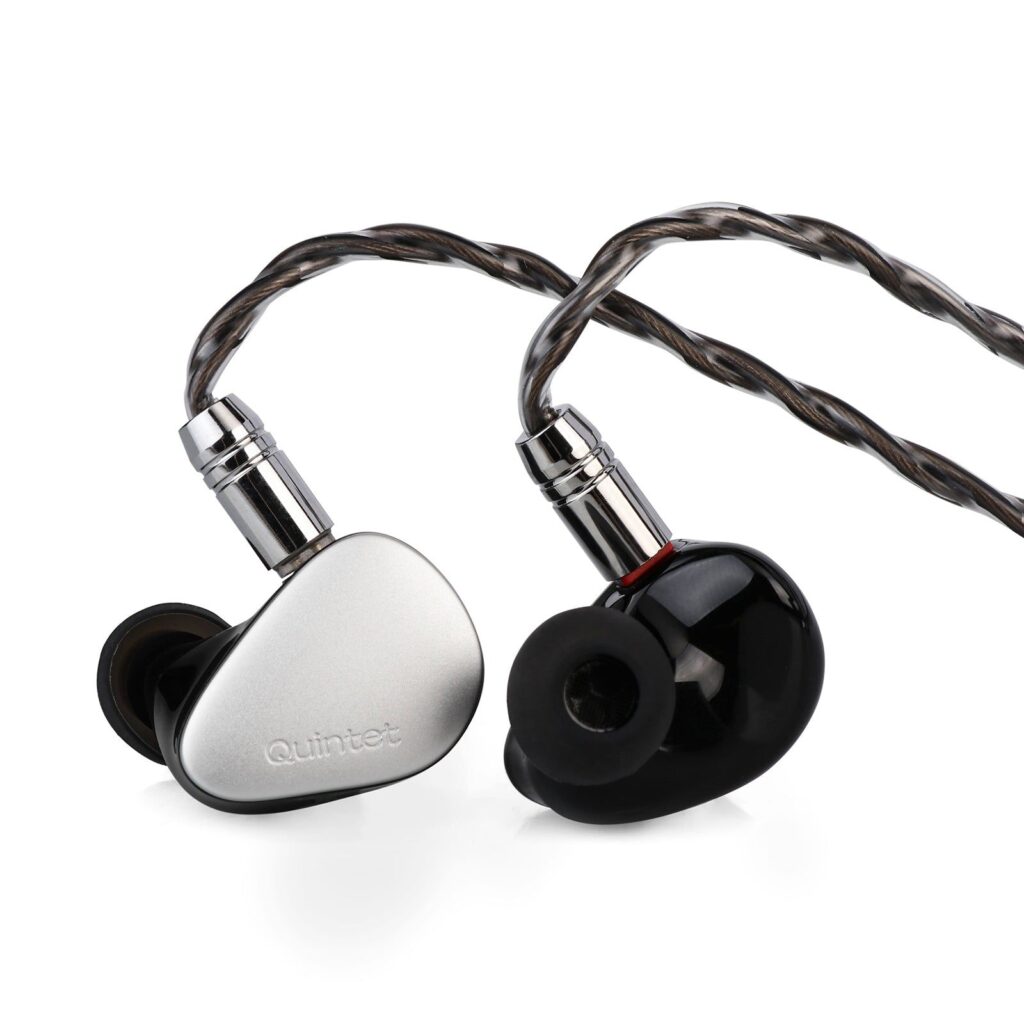
KIWI EARS QUINTET SPECIFICATIONS
- Drivers: 1 diamond-like carbon (DLC) dynamic driver, 2 balanced armature (BA) drivers, 1 planar magnetic driver, and 1 piezoelectric (PZT) bone conductor
- Impedance 32 Ohms
- Sensitivity: 106 dB
- Included cable: 1.2 m detachable silver-plated OFC cable
- Cable plug type: 3.5mm
- Cable plug IEM: Detachable 0.78mm, 2 Pin
Check the current price here:
- Linsoul: Kiwi Quintet
- Amazon: Kiwi Quintet
ABOUT TIPS
In my experience, the Cadenza 4 is very susceptible to tip-rolling. I suspect it’s got something to do with the unusually wide nozzle, with the three acoustic tubes going all the way to the tip of the nozzle. It comes with two sets of tips. Wide bore called “vocal” and narrow bore called “neutral”. They sound close to my preferred (wide bore) Azla SednaEarFit Crystal and (narrow bore) Spinfit CP145 tips, respectively.
The Quintet is not as susceptible to tip changes; the differences very subtle in comparison.
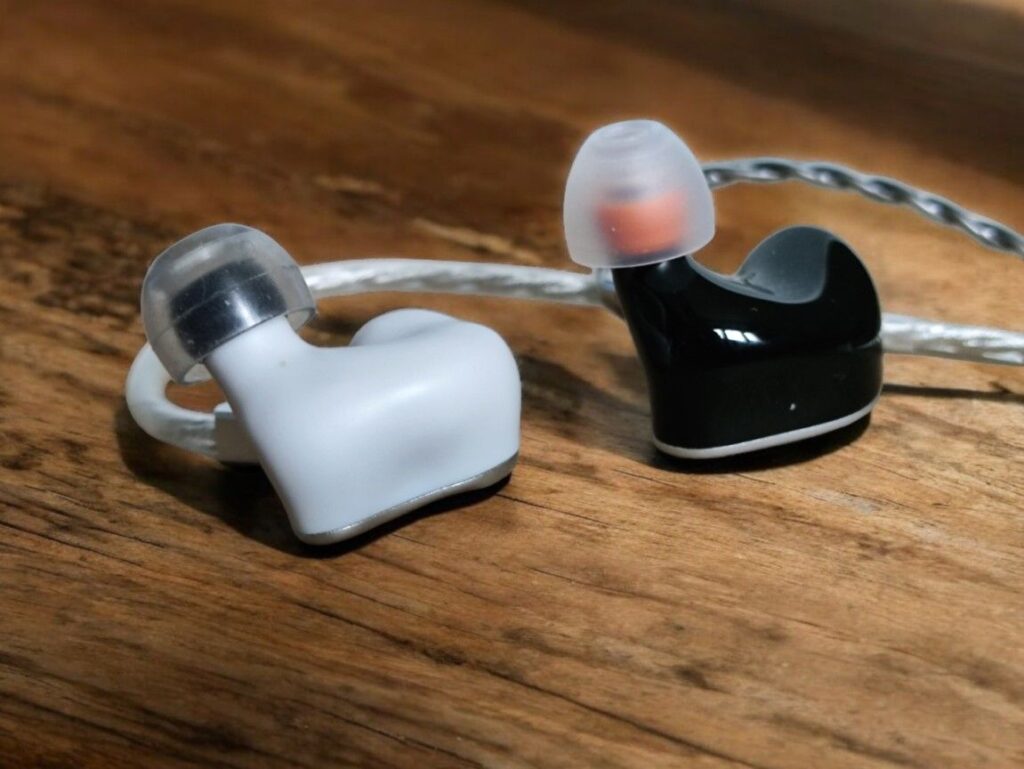
Anyway, for this comparison, I use the Spinfit CP145 tips on the Quintet and the Azla SednaEarFit Crystal tips on the Cadenza 4. These are my preferred tips for those earphones. Putting the CP145 on the Cadenza 4 increases the bass noticeably and makes the sound slightly warmer. I will comment more on that later. Putting the Crystal tips on the Quintet only makes subtle changes.
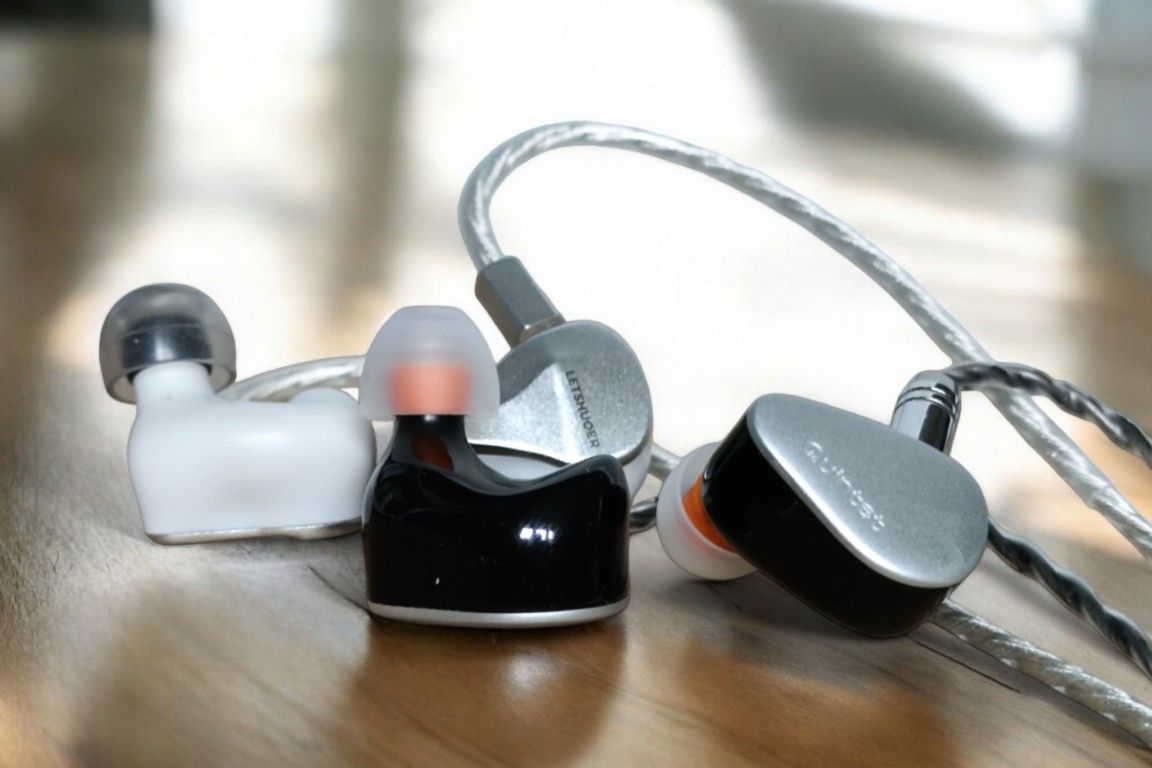
LISTENING IMPRESSION
I used the Topping A90 as an amplifier and the RME ADI-2 DAC FS as a source. The RME sounds excellent by itself, but it’s more practical for me to use the Topping. Both IEMs work well with portable gear, too. Anyway, here’s my track-by-track comparison:
In The Mountains by Espen Eriksen Trio
Cadenza 4: Starting out with a nice jazz trio The standing bass is strong, but not as overly powerful as it often is rendered. It is quite perfect; it has great definition and enough presence for me. The piano is clear yet has a good amount of body. The percussion is beautiful, and the treble is effortless. Imaging is nice, but the soundstage isn’t enormous, it’s a closed design after all.
Quintet: The bass is stronger. The sound is more focused, but the soundstage is smaller. The general detail level is similar.
Jambi by Tool
Cadenza 4: The guitar riffs are very textured without being edgy. The bass is definitely not on the heavier side, but it has great definition. The vocals stand out clearly in the mix. It sounds effortless, detailed, and smooth.
Quintet: The bass is stronger, the vocals aren’t as articulate and sounds a bit darker. The guitars might be a tad more energetic. There’s no problem with sibilance, but the sound is a bit crisper than with the Cadenza 4. I might prefer the Quintet here.
Smile by Pearl Jam
Cadenza 4: Again, the bass is just right and rendered with great definition. The percussion is very snappy, and the separation of instruments is excellent. You can easily identify what is going on on this rather busy track. Eddie Vedder’s vocals stand out clearly and are rendered without sibilance.
Quintet: Again, the bass is stronger; otherwise, they’re very similar.
Almost Like The Blues by Leonard Cohen
Cadenza 4: Leonard Cohen’s vocals are what really stand out. It is full of detail and texture in a very organic-sounding manner. The bass is definitely perfect in quantity and has good definition. The percussion is very present in the treble region, but in a very smooth and delicate way.
Quintet: The bass is stronger as usual, and as always, it’s very defined and not bloomy. The presentation is a bit warmer, probably because of the stronger bass; otherwise, they are remarkably similar.
Black Crow by Cassandra Wilson
Cadenza 4: The imaging and separation are very good; there is a great sense of depth and spaciousness. Again, the vocals are in the center of attention, and the bass is relatively polite sounding but not lacking in quantity.
Quintet: The bass is stronger, the vocals are less up front. Otherwise, they’re pretty equal.
As Before by Olga Konkova
Cadenza 4: The cajôn drum throws a punch, but the piano gets the focus, like it should. Like the piano, the female vocals are absolutely wonderful. Natural and organic, effortless, and clear without sharp edges.
Quintet: There more bass. The piano is still crisp and clear, so are the vocals, but the main impression is slightly warmer.
Escape Route by Boris Blank
Cadenza 4: Great electronic track. Very snappy sounding; the bass gives a good foundation and doesn’t need to be stronger. There’s a good sense of space, and everything has an organic touch.
Quintet: Very similar sounding.
Brahms’ Symphony No. 2 III by Paavo Järvi
Cadenza 4: The kettle drums are quite massive, and the bass goes deep, but they’re not too dominant. The strings and wind instruments are beautifully rendered. The separation of instruments is excellent, and even though there is good space between them, they are rendered with a good amount of body and presence.
Quintet: The imaging might be a little better with the Quintet, especially in the lower regions. The Cadenza 4 is more spread out and less pinpointed. Otherwise, they’re pretty similar.
Young Vivaldi’s Violin Concerto RV 820 III by Ensemble Modo Antiquo
Cadenza 4: The strings are absolutely terrific sounding. They have bite and attack, but at the same time, they have a rounded and organic feeling. There is no harshness, but they’re not sounding laid-back either.
Quintet: The Quintet is sharper cut, and the instruments are more pinpointed; the Cadenza 4 is more ethereal.
Limit to Your Love by James Blake
Cadenza 4: Blake’s vocals are clear and crisp. The bass is really excellently rendered, and the sub-bass is very present. I have found the Cadenza 4’s bass refreshingly undominant on many tracks, but it’s not rolling off with the sub-bass. I wouldn’t want more bass, especially on this track.
Quintet: Surprisingly, the bass isn’t much stronger on the Quintet, probably because it’s quite deep. The vocals are not as pronounced as with the Cadenza 4.
Graceful Touch by Tord Gustavsen Trio
Cadenza 4: Sounding spacious and clear. The bass is well defined, but not very strong.
Quintet: Darker, lusher sound with more bass.
Summer 3, Vivaldi Recomposed by Max Richter
Cadenza 4: The sound is crisp and clear without getting sibilant. There’s a great timbre to the strings and an ethereal ambience.
Quintet: There’s a darker tonality, more bass presence, and a better sense of image depth.
MORE ABOUT TIPS
As I mentioned earlier, the tips used on the Cadenza 4 matter a lot. I used the Azla SednaEarFit Crystal tips in my main comparison session, bit I also did a quick round with the same playlist using the SpinFit CP145 tips on the Cadenza 4; comparing the Cadenza 4 to the Quintet. I will comment on that below.
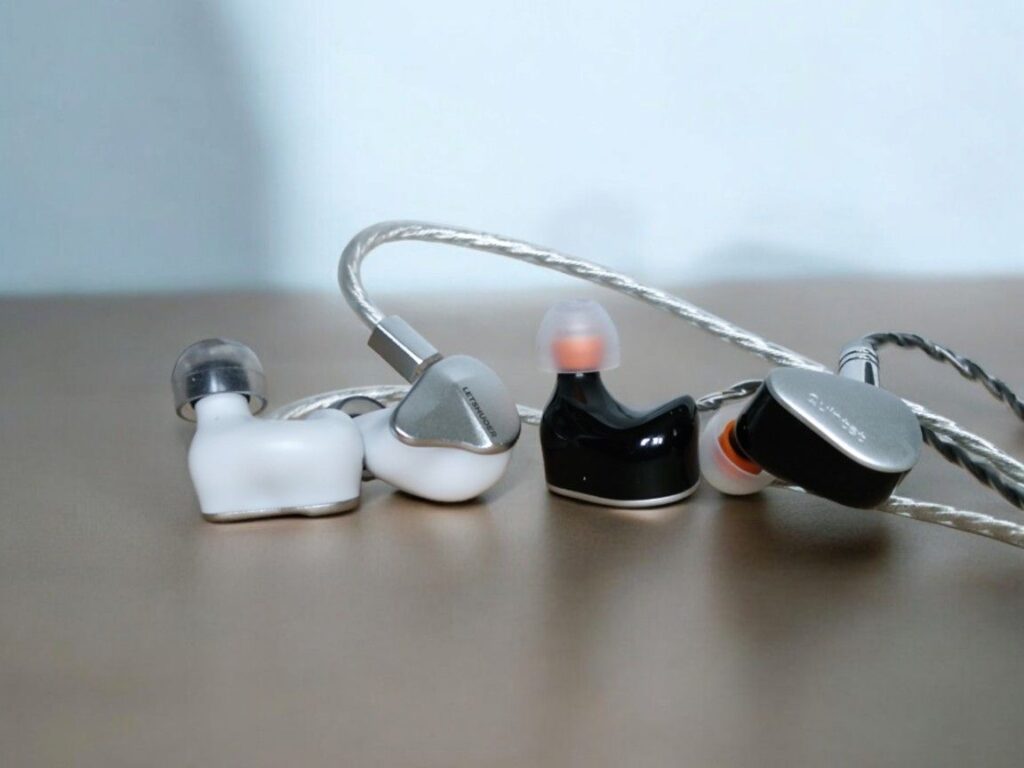
WRAPPING IT UP
Sound Signature
I find the sound signature of the Cadenza 4 to be very dependent on tips, as I have already mentioned. With the wide-bore AZLA SednaEarFit Crystal or the supplied “vocal” tips, the Cadenza 4 is bass-light and midrange focused, crisp, clear, and tight. With the narrower Spinfit CP145 or the supplied “neutral “ tips, there’s more bass and a warmer tonality. However, the Quintet has more bass in either case without being bass-heavy.
Treble
Both have a present and mostly very balanced sounding treble. They are both very detailed, with nice articulation.
Midrange
The midrange is also very similar. With the Crystal tips, the Cadenza 4 is slightly brighter and crisper. With the CP145 tips, the Cadenza 4 gets very similar to the Quintet.
Bass
Both have a tight and textured bass with good definition. With the Crystal tips, the Cadenza 4 is polite in quantity but still reaches deep, is very punchy, defined, and tight. With the CP145 tips, the bass increases in quantity, but it’s still not as strong as the Quintet’s bass.
Trying out the Quintet with the Crystal tips doesn’t make much difference. It reduces the bass slightly, but still, the Quintet with Crystal tips has more bass than the Cadenza 4 with CP145 tips.
Soundstage and Imaging
With the Crystal tips, the Cadenza 4 is wider and more left-to-right, and the Quintet is narrower with more image depth. With the CP145 mounted, the Cadenza 4 is more similar to the Quintet. Generally, they’re both good at imaging, but the Quintet might be more pinpointed.
Details, Dynamics and Timbre
The detail level is pretty similar across the range, from bass to midrange and treble. Both have great dynamics and are comparable.
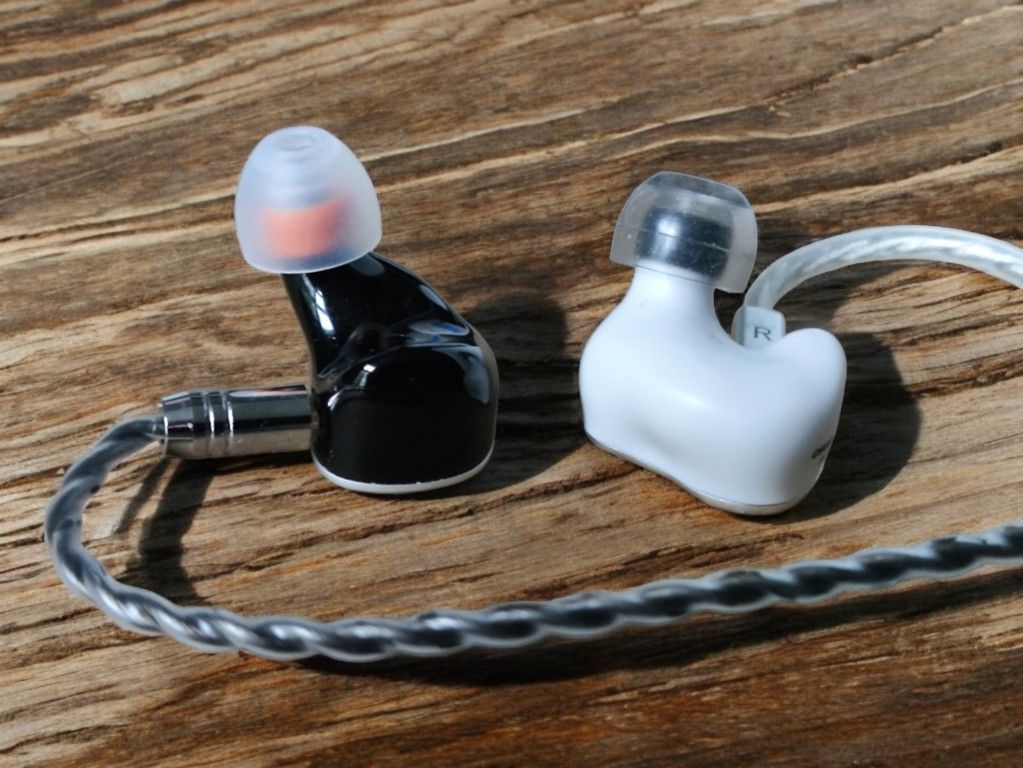
CONCLUSION
The Kiwi Ears Quintet and the Letshuoer Cadenza 4 are excellent performers in their price class and are comparable in almost every way. Both have a very high level of detail and good dynamics; the sound signature is great and relatively close. The Quintet did, however, have more bass quantity.
Purchase links
- Linsoul: Kiwi Quintet
- Amazon: Kiwi Quintet
My Kiwi Ears Quintet review can be found here
My Letshuoer Cadenza 4 review can be found here
Any purchase you make on Amazon or Linsoul with any of our affiliate links will give us a small provision at no cost to you.
We only get a provision for items that are not returned, so there’s no incentive for us to recommend something that’s not good.
Linsoul : Headphones, Earbuds, Wireless Earbuds, Desktop DAC/AMP, Portable DAC/AMP, Digital Audio Players,
Amazon: Headphones, IEMs, Headphone Amplifiers, Home Audio or Anything else.
.
If you enjoyed this article or other content on The Headphoneer, you might consider leaving a small donation to keep this website up and running. No donation is too small. Thanks for supporting us!
If you like our work please follow us on Instagram, Facebook and Twitter , it will help us grow. Sharing is caring 🙂


